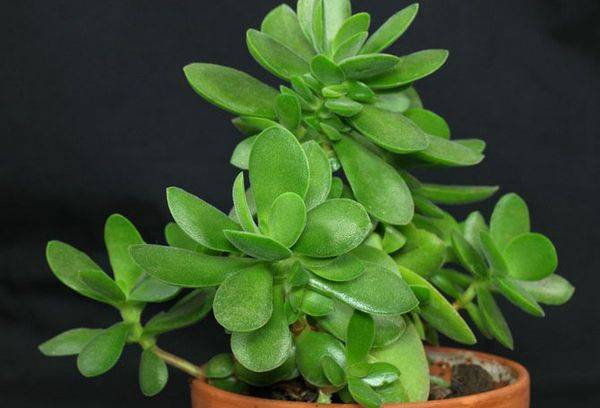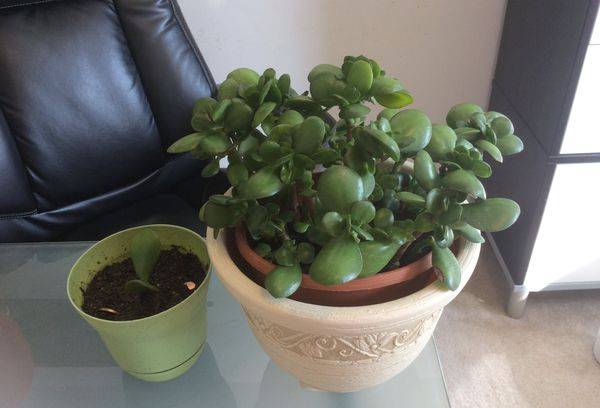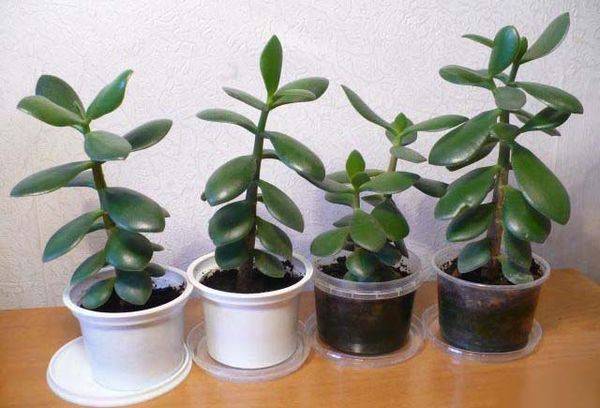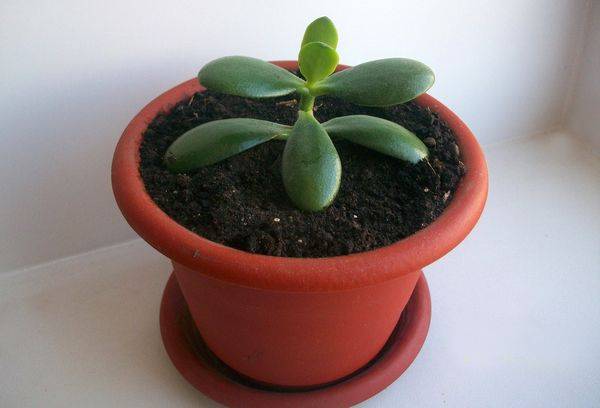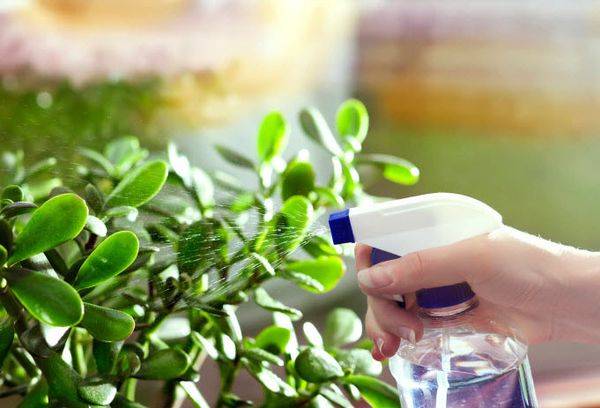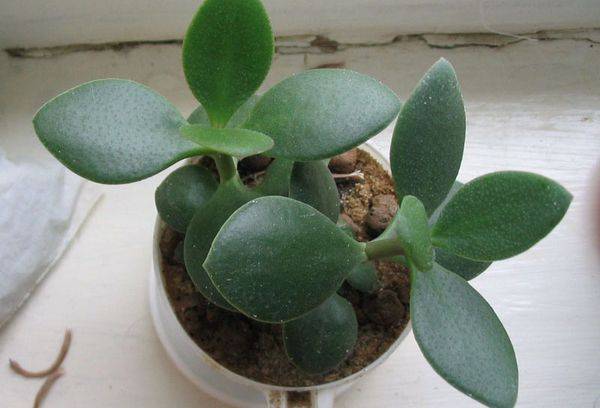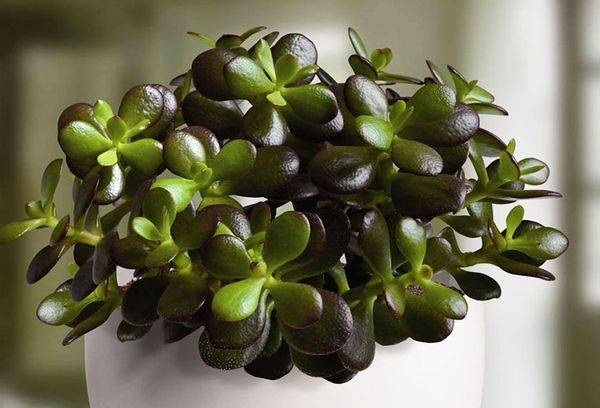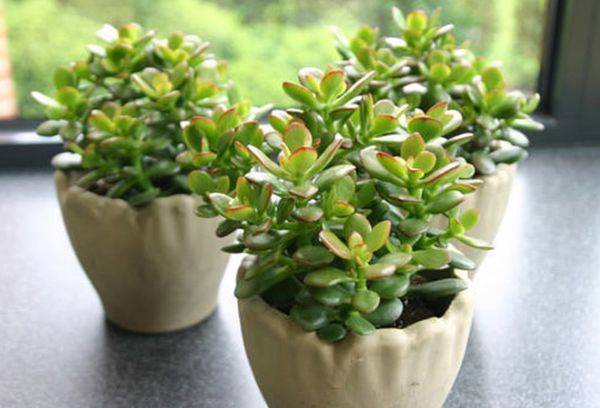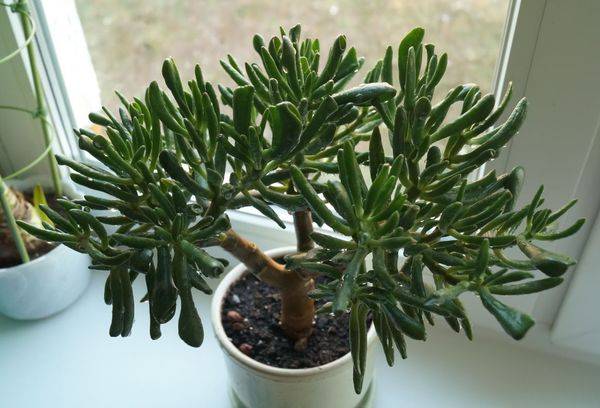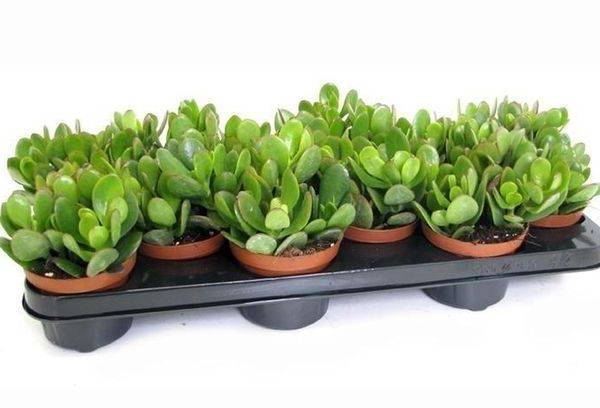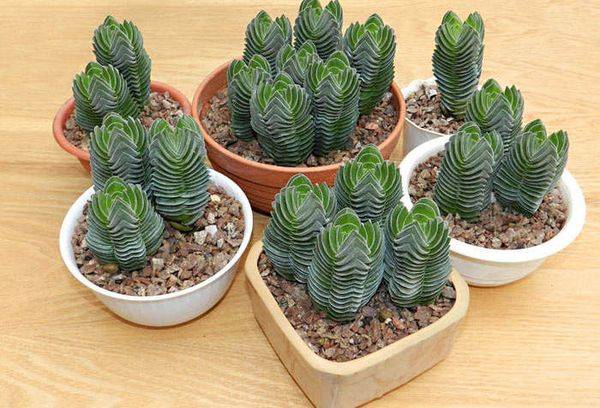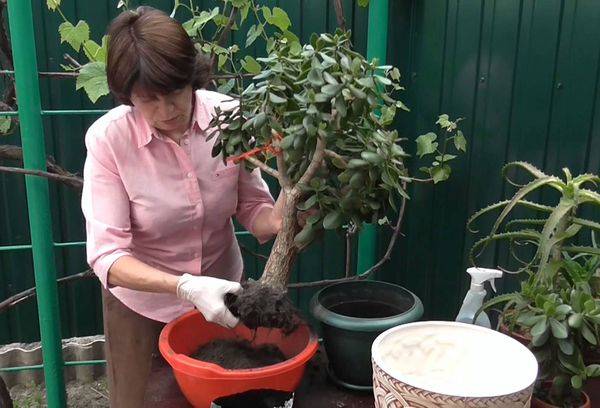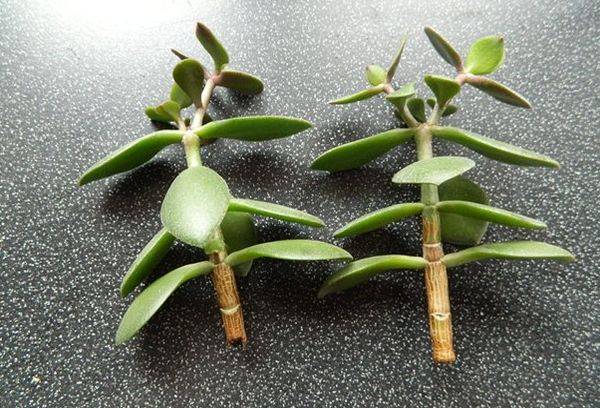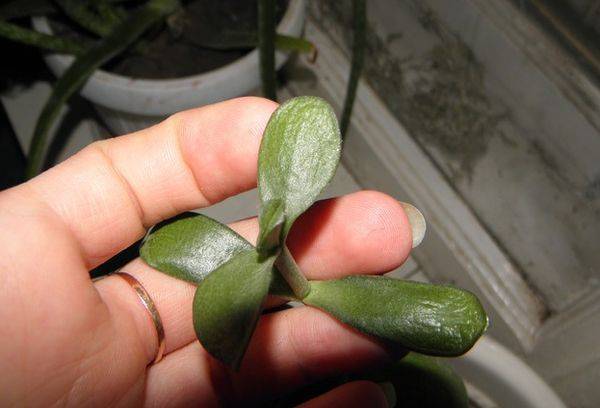Growing and caring for Crassula: what does the money tree love?
Content:
The houseplant of Crassula (Crassula and other names: Crassula, Krasula, Piazza) is much more widely known as the green talisman, money tree. It is believed that the flower attracts wealth and material well-being to the house. They love and respect Crassula for her character: she is not demanding and easy to care for, grows equally well in the shade and in bright light, can go without water for a long time.
The plant looks very impressive, easy to shape, making it ideal for bonsai and other excellent compositions. Along with the popular classic version, there are various hybrid varieties with an original appearance, unpretentious in care.
Growing a rossula at home is quite simple, but there are subtleties that understanding will allow you to provide ideal conditions for the plant so that it has a healthy and well-groomed appearance.
Despite the fact that Crassula feels good even under the influence of direct sunlight on the south window, the southeast side is most suitable for it. The tree also develops well on a window looking east.
With a lack of sunlight, the plant will also survive, but will stretch, and the color of the leaves will turn pale. If the bush is located on the northern window, then the reddish shade of the leaves, characteristic of some species, will not appear. After prolonged shading during cloudy weather, as well as in early spring, it is recommended that the plant be gradually accustomed to sunlight to avoid unpleasant burns. During active growth, the money tree requires warmth and fresh air, so it will be grateful for moving to the garden or balcony.
In winter, the flower needs rest and peace. To do this, you need to put it in a cool room. The tree can withstand low temperatures of minus two degrees. However, it tolerates winter well in normal surroundings. Do not place the plant near heating appliances.
If the fat woman in winter is not cleaned in a cool place, then her shoots will stretch during this period, and the leaves will fall off.
What capacity is suitable for growing
When choosing a flower pot, it should be remembered that the roots of the rosula are located close to the soil surface and are too sensitive to excess moisture, and the crown is wide and weighty. To ensure stability and favorable conditions for growth, the flower should be planted in a flat wide and heavy container, the diameter of which is slightly larger than the diameter of the crown.
At the bottom of the pot, it is necessary to place a layer of drainage, for example, expanded clay (2 cm). The greatest decorative effect is achieved if only one tree is planted in one container.
How to pick up the soil
Soil for a fat woman is the easiest way to purchase ready-made, in any gardening store. The plant is not demanding on the composition of the earth. Ready soil for cacti or other loose sandy substance is also suitable. You can prepare the soil mixture yourself.
Tip
purityis.decorexpro.com/en/ recommends adding chopped charcoal to the soil to protect the roots from rotting in excess of moisture.
How to water
At home, minimal care is required. Watering is rare. It is recommended to do this only after the final drying of the soil surface.Crassula is a succulent plant, so it tolerates dry soil better than excess fluid. Especially dangerous is excessive moisture in the winter. Rarely watered at this time, an adult plant - no more than once a month. Soft leaves are a sign of lack of water.
For watering, water is used at room temperature. The most suitable time is evening.
What should be the humidity
The plant perfectly develops in a dry atmosphere, additional spraying is not required. To remove dust from the leaves of Crassula, it is sometimes recommended to wipe them with a cloth dampened with water or a napkin. There will be no fat against the soul, if the soil is covered with a film.
How to feed
Crassula does not require frequent and plentiful feeding. In spring and summer, once or twice a month is enough. Any fertilizer for succulents in the form of a solution is suitable. In winter, top dressing is carried out much less frequently, while the concentration of fertilizer is halved.
Fertilizer is well perceived by the plant, if applied to moist soil, immediately after watering.
When a tree is transplanted into fresh soil, abundantly flavored with compost, it grows well and has large succulent leaves, it should not be fertilized.
Variety of species
The flower is part of the family Crassulaceae and includes 300-350 species. Perennial and annual species of wild and indoor plants are distinguished. Different forms are found: bushy, tree-like and grassy.
The most famous species grown at home:
- Crassula tree oval, or Ovata. This plant is in the form of a bush up to one meter high. The stem is lignified, branches are dense, leaves are elongated, oval in shape. Some species may have red streaks on top of the leaf plate. Ovata is unpretentious in care, successfully grown in a home environment. The flower tolerates shade well, has a large number of varieties that differ in color and shape.
- Crassula Minor. The undersized variety is the most popular. The bush is compact, leaf blades have a reddish hue, each length is 1.5 cm and width is 1 cm. Krasula Minor grows very slowly, therefore it is great for decorating a mini-garden.
- Crassula The Hobbit. This variety is hybrid, obtained by crossing a milkwort and Ovata. It is characterized by the fact that its leaf plates of the original form are turned outward, while they are fused from the stem to the middle. The Hobbit resembles Ovata in its size and growth characteristics. This species is distinguished by a highly branched trunk, which gives it a greater decorative effect. The plant is often used to form bonsai. Variegated hybrids are especially popular.
- Crassula Mix. One of the most famous varieties of the family that flower growers prefer. The plant has the appearance of a small bush. The leaves are dark green. The trunk is distinguished by its massiveness.
- Temple of Buddha. This variety has an outstanding appearance. He is loved by many gardeners. It attracts attention not only with its original appearance, but also with a decent size. It remains in an upright state up to 15 cm, then, most often, bend under its own weight.
How to transplant
Young plants are transplanted once a year. Adult bushes require relocation to new soil after three years. The procedure is carried out in the spring, after the flower pot is filled with roots. In order to avoid damage to the plant, it is necessary to transfer it with a soil lump into a wide container with a diameter larger than the previous one, filling fresh soil in voids.
In the case where the root system is large, it can be shortened a little to be placed in a new pot. The planted plant is watered carefully, in small portions, since overflow and stagnation of moisture is likely to lead to decay of the root system.It should be noted that landing in a wider vessel stimulates the growth of the fat woman, therefore, if necessary, accelerate the growth of the operation more than once a year.
Tip
If you want to maintain the compactness of the bush, transplant the rosula very rarely, using small containers or changing the ground for fresh.
Propagation Features
One of the main advantages of this plant is the ease of its reproduction. Different methods are used. The seed method is used very rarely, since propagation by cuttings is much simpler.
Cut the bush at any time of the year. However, in winter, additional lighting and protection from the cold will be required. The cuttings are kept for 2-3 days in the open air, sluggish, after which they are planted in containers with a light substrate consisting of sheet soil, turf and sand in a ratio of 2: 1: 1.
Sometimes cuttings are pre-rooted by putting in water with the addition of activated carbon for disinfection. After the roots appear and the seedlings begin to grow, they are planted one at a time in a container with a diameter of 5 cm.
If you want to propagate Crassula seeds, mix the leaf soil and sand in a ratio of 2: 1. Scatter seeds across the surface of the earth. Cover the container with glass, spray regularly and ventilate daily. Shoots appear in two weeks. Small plantlets dive and move to a very bright place. When the young shoot begins to actively increase in size, it is planted one bush at a constant place. The composition of the soil is used the same as when grafting.
Avoiding Possible Ailments
Crassula is characterized by excellent resistance to various negative influences. The tree successfully copes with errors in care, untimely watering and rare top dressing. The plant suffers worse when over-cared for.
Abundant watering is detrimental to the crop. If there is no drainage, then fluid stagnation often occurs, which leads to the appearance of Fusarium rot.
This disease is one of the most common. It first affects the root system, then rises to the root neck. A white-pink hue appears on the leaves.
An ill bush most often dies. Salvation is possible only in the early stages of the disease. The plant is transplanted into new soil, completely removing the old soil and the rotten ends of the root. To prevent the disease, you need to fix the watering schedule and alternate watering with thorough drying of the soil.
Often observed malaise of the crassula is falling of leaves. The reasons may be:
- excess soil fertilizer;
- increased ambient temperature;
- excessive moisture.
In extreme conditions, the flower multiplies very quickly. In the wild, young shoots are formed from leaf blades in Crassula, and this is the main reason for their decay.
To heal a flower, you need to get rid of a damaging factor: transplant into a new soil, place in a room with a comfortable air temperature. If all leaves have fallen, the top of the stem must be cut and rooted.
To achieve long-term flowering, the tree provides good lighting, a complete dormancy with reduced watering in a cool room.
Pests attack the plant rarely. They can be: scale insects, false shields, aphids, mealybugs. Standard methods of control should be used. With a large degree of damage, insecticidal solutions are treated. If there are few pests, it is enough to remove them mechanically: rinse with warm water or remove with a cloth soaked in alcohol.
In order for the Crassula to delight you with its magnificent appearance, look after it, following these simple tips.
